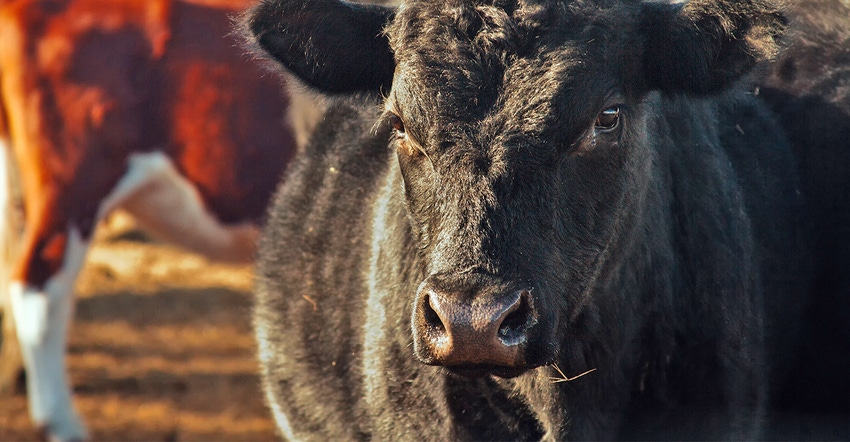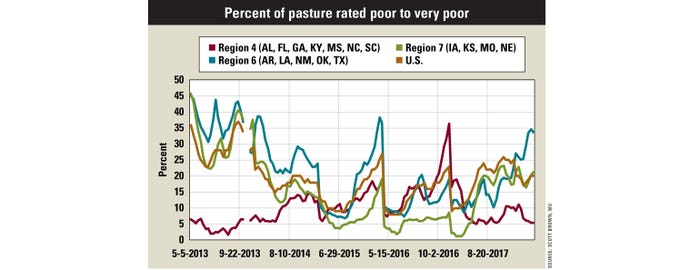Is beef herd expansion coming to a halt?
Location, weather and forage supply will determine how low cow numbers will go.
July 3, 2018

By Scott Brown
Is the size of your beef cow herd changing this year? More than likely, it depends upon where your operation is located — and more specifically, how your pastures are faring.
A few months ago in this column, concern was raised that many areas of the U.S. would enter spring with a moisture deficit, and that the extent to which dry weather intensified would likely be the determining factor as to whether the national beef cow herd would grow for the fifth straight year in 2018.
Now that summer is upon us, and with a midyear USDA cattle report scheduled for release July 20, it is time to take an updated look at how geography and pasture conditions have affected beef cow slaughter in recent months. USDA provides beef cow slaughter data on a regional basis, and examining slaughter trends in three of the larger beef cow regions points to the impact that year-to-date weather conditions have had on the number of beef cows being sent to market.

Weather implications
The states making up regions 4, 6 and 7 (see graphic for the list of states in each of these regions) account for more than 60% of the U.S. beef cow herd. They also represent the wide variability in current drought conditions: Very few areas of the nation east of the Mississippi River are experiencing dry conditions, while large areas of moderate to exceptional drought reside from Utah and Arizona eastward as far as western Missouri, Arkansas and Louisiana.
The graphic denotes the percentage of pastures described as poor to very poor in each state, weighted by the number of beef cows in each state to produce a regional total. USDA reports weekly pasture conditions each year from May to October, and weekly data thus far in 2018 show that conditions in Region 6 —Arkansas, Louisiana, New Mexico, Oklahoma and Texas — have deteriorated considerably in recent weeks. Meanwhile, Region 4 —much of the Southeast U.S — has very little drought stress to manage at this time.
Culling cows
Not surprisingly, beef cow slaughter numbers correspond closely to these varied pasture conditions. Beef cow slaughter in Region 6 is up 10.4% on the year (through early June), with 14% more cows slaughtered since early April than in 2017.
Conversely, beef cow slaughter in Region 4 is down 11.1% year to date, and down 13.5% since early April. Region 7, which includes both relatively dry Missouri and Kansas as well as Iowa and Nebraska, where timely rains have fallen, has seen beef cow slaughter up 6.7% year to date, and 8.8% in recent weeks.
While it is still not clear whether the early spring cold temperatures and subsequent dry weather in portions of the country will be enough to result in a shrinking beef cow herd for the year, it is certain that poor pasture quality is taking a toll on many producers. Watch USDA’s July Cattle report and updated pasture conditions throughout summer to provide information on whether the latest round of herd expansion is coming to a close.
Brown is a livestock economist with the University of Missouri. He grew up on a diversified farm in northwest Missouri.
You May Also Like



